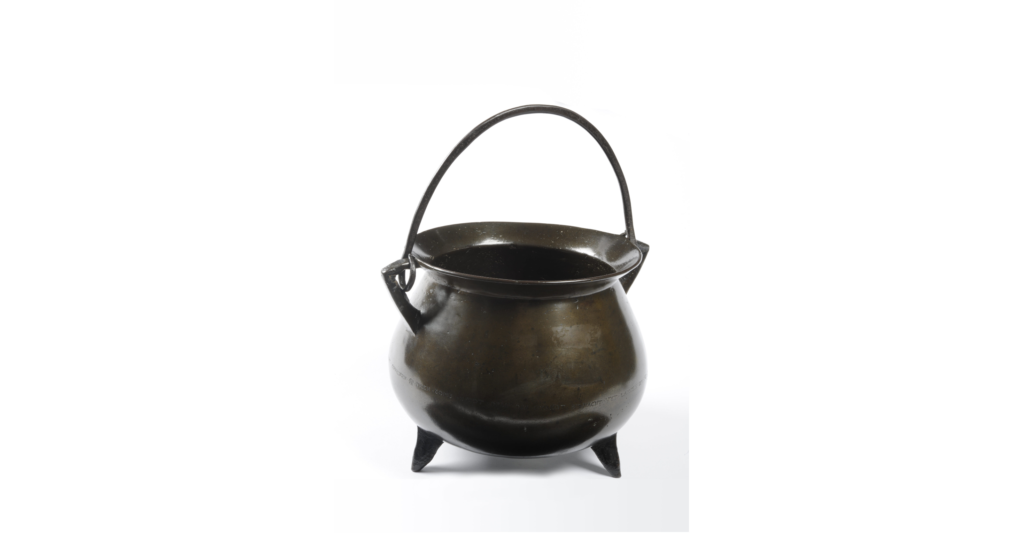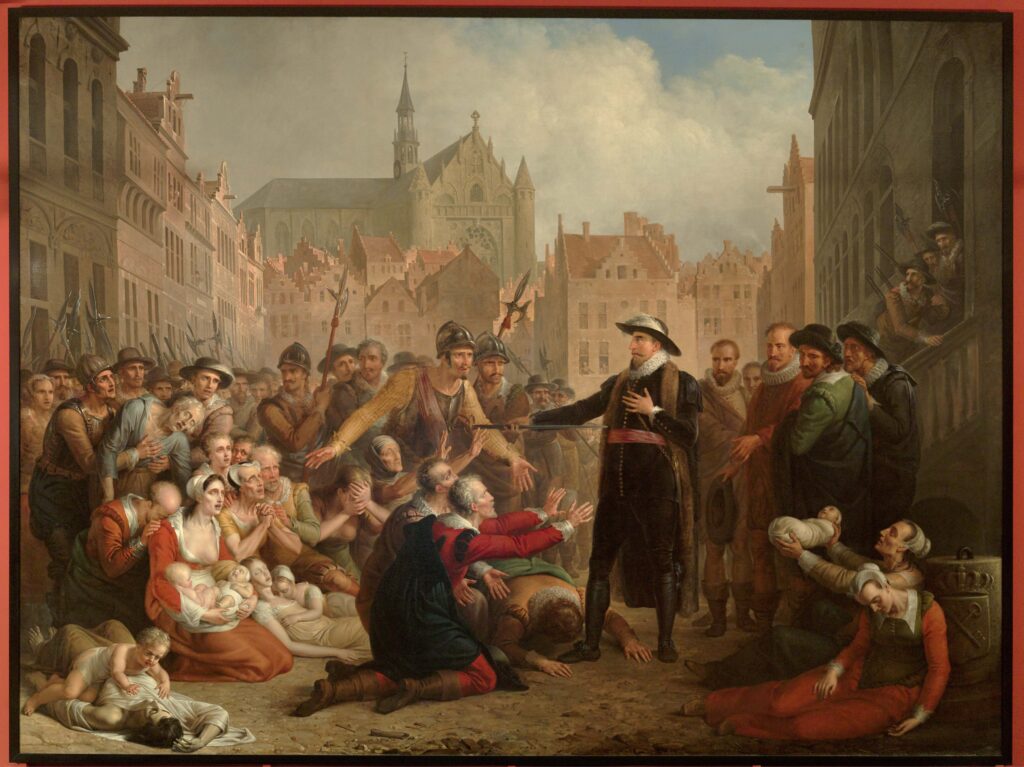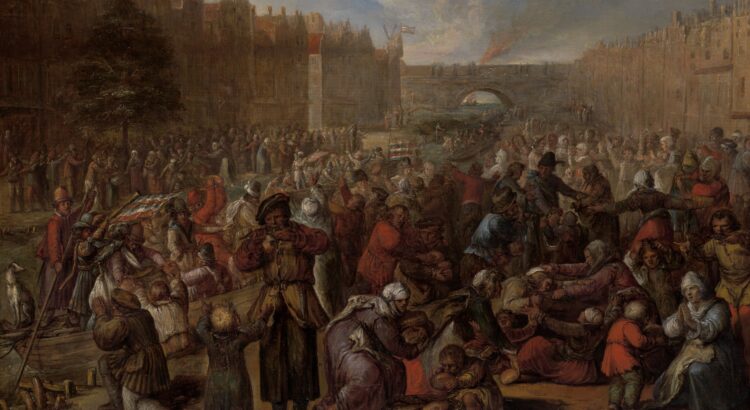Imagine: the year is 1574, the sun is rising in the Dutch city of Leiden and people are slowly waking up. The Netherlands was embroiled in a war, which would later be called the Eighty Years’ War (1568-1648), against the Spanish. The seventeen Dutch provinces had rebelled against their Spanish ruler because they had different opinions and ideas about the centralisation policy of the Spanish ruler, about religious discussions between Catholics and Protestants and about the treatment of one another. The tensions manifested themselves in diverse rebellious actions against the Spanish rulers. In response, the enraged Philip II of Spain sent an army up north, led by Fernando Ãlvarez de Toledo, better known as the Duke of Alva.
How the myth goes
Leiden was besieged by the Spanish army for almost a year, from 30 October 1573 to 3 October 1574. The Spanish Duke of Alva had been sent north to bring the Netherlands back under Spanish rule and force the rebels to calm down. For this to succeed in the case of Leiden, the aim was to isolate and thus starve the city: Spain hoped this would force the city, and eventually the Netherlands, to surrender. The hunger among the population, the plague that struck and the hopeless situation due to the Spaniards lurking outside the city walls made for a plight. Redemption came on 3 October 1574, when Dutch rebel leader William of Orange (1533-1584) had breached the dykes and was able to liberate Leiden by water.
According to tradition, the brave orphan boy Gijsbert Cornelisz. Schaeck dared to enter the Lammenschans, an entrenchment used by the Spaniards during the siege of Leiden. Here he found no more Spaniards, they had all fled the rising waters, but he did find a cauldron filled with hutspot, some sort of stew, that the Spaniards had hastily left behind. The hutspot cauldron, part of the collection of Leiden museum De Lakenhal, became the symbol for surviving the famine and hutspot became the food of 3 October. Hutspot, or this type of stew, has since become a typical Dutch winter dish. It is made by boiling potatoes, carrots and onions together until tender – possibly with bay leaf and peppercorns and sour apple – and then mashing the whole thing into a stew. Nowadays it is a typical Dutch dish, inspired by remnants of the Spanish besieger in the sixteenth century.

The Leids Ontzet (Relief of Leiden) is still celebrated every year in the city: the funfair is set up, the history of Leiden is commemorated and, as a tradition, hutspot, herring and white bread are eaten. Hutspot because of the found cauldron filled with carrots, onions and parsnips; herring and white bread the Watergeuzen, the Dutch rebels who liberated Leiden from the siege, had brought for the starving inhabitants of Leiden.
Famine in Leiden
Food was a big issue during the Leiden siege of 1573-1574: the city’s inhabitants were slowly but surely starving, food supplies dwindled while prices rose, and heroic stories like Schaeck’s entered Leidens memory culture. Not only Schaeck became a local hero, but mayor Pieter van der Werff (1529-1604) also positively entered the history books, who had offered his body as food to the hungry people of Leiden during the Leiden siege. Mattheus Ignatius van Bree (1773-1839), Antwerp painter specialising in portraits and historical genre pieces, immortalised this iconic moment by painting it (De zelfopoffering van burgemeester Pieter van der Werff, 1816-1817). It has become an impressive canvas over four metres high and six metres wide which can be admired in Leiden’s Museum de Lakenhal, and depicts the moment when the mayor offers his own body as food to the starving townspeople. Hunger is a central element on this canvas, and an important part of the narrative in Leiden’s culture of remembrance concerning the siege and relief. The collective hunger narrative went on to serve as a form of recognition and association in the city of Leiden and its memory culture.

Whether the narrative prevailing in the vibrant culture of remembrance surrounding the Leiden siege and relief is correct is disputed by modern scholarly insights. Whether Schaeck was actually the first person to enter the Lammenschans on the morning of 3 October 1574 and found a full cauldron of hutspot remains to be seen and may even be a myth. Whether mayor Van der Werff offered his body as food for the hungry people of Leiden was heard and seen by eyewitness Jan Fruytiers, but he did not write it down until three years after the relief. Moreover, the rampant plague in the city led to the highest death toll, but hunger entered the culture of memory as causing the most misery. In 2011, Dutch photographer Erwin Olaf (1959-2023), with his modern history piece called Liberty, cast the narrative about the Leiden siege and relief in a different light, giving renewed historical insights a place in the photograph. As a result, the plague and its role are more clearly reflected, and space has been made for figures other than the hero Van der Werff.

Although the story may be a tad different from what is told in the prevailing narrative, the Leids Ontzet is still celebrated every year in Leiden on the third of October. The narrative of surviving the famine during the siege has survived the test of time and even today provides a vibrant tradition in the city. According to this tradition, hutspot is eaten on the evening of 2 October, and herring and white bread on the following day. By being (or becoming) a member of the 3 October Vereeniging, you can get a free plate of hutspot in town on 2 October. On 3 October, herring and white bread is free for any Leiden resident.
Written by Mikki Vrijenhoek
Further reading:
- Koppenol, J., Het Leids Ontzet: 3 oktober 1574 door de ogen van tijdgenoten (Amsterdam 2002).
- Maanen, van, R.C.J. en J.W. Marsilje, Leiden: de geschiedenis van een Hollandse stad. Dl. 1: Leiden tot 1574 (Leiden 2002).
- Pollmann, J.S., Herdenken, herinneren, vergeten. Het beleg en ontzet van Leiden in de Gouden Eeuw (Leiden 2008).
- Wijsenbeek, T., Honger (Den Haag 2006).
